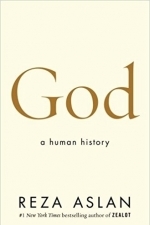Sensitivemuse (246 KP) rated Suicide Club in Books
Aug 18, 2018
It’s an interesting world, where suddenly everything that you thought was normal isn’t anymore and is frowned upon. These special perks are not always granted to everyone because it’s also based on your genetics, your job, and your social standing as well. It’s appealing but at the same time it doesn’t sound so fun and it feels like you’re a drone.
The plot itself was interesting and follows two points of view. Lea and Anja. I prefer Anja’s point of view because she’s part of the underground Suicide Club movement for various reasons. She’s a carefree spirit who does what she wants despite society and its’ demands because she’s seen the other side of things and how it’s affected people she cares about (her mom in this instance). The two characters offer two very different perspectives in the novel and it all comes together nicely and seamlessly.
I rather enjoyed the part with Lea and Kaito on the boat. You feel the emotion and the sadness of what’s to come. You feel the regret of moments missed in life and although it can’t be made up in just one sitting, that one moment together still creates a powerful memory that stays with you - which no one can take away. It’s a bittersweet moment and the most memorable in the book.
Although the plot flowed through nicely, I can’t really say I like the writing style. It drags in some parts and it shows an attempt to be lyrical and poetic with way too many descriptions of smells and sights. I understand the point of it being that instead of becoming a drone like everyone else, stop and just live the moment and take in your surroundings. However it bogs down the reading flow and I found myself struggling to keep the pace. Less lyrical prettiness and let’s just get down to the basics shall we? It would have made the reading more enjoyable.
Overall, a great interesting idea and a good deep read. Worth the time to go through.
Hazel (1853 KP) rated God: A Human History in Books
Nov 5, 2017
Where did religion come from? This is the question Reza Aslan, a scholar of religions, attempts to answer in his latest publication, God: A Human History. To date, Aslan has tackled subjects such as the life of Jesus of Nazareth, and the origins, evolution and future of Islam. In this book, the author journeys back to the earliest evidence of human existence and, using a mix of resources, theories and investigations, tries to determine how our ancestors conceived the idea of gods and souls. Maintaining the idea that the majority of humans think of God as a divine version of ourselves, Aslan also looks at the way our perception of life after death has altered due to the changes in our governments and cultures.
Reza Aslan claims that he, a Muslim-devout-Christian-convert-turned-Sufi, is neither trying to prove or disprove the existence of God or gods. Instead, he is providing readers with a thorough history of religion with a strong suggestion that we, as believers, have fashioned God in our image, and not the other way around.
Insisting that belief systems are inherited from each previous generation, Aslan takes a look at ancient cave drawings where he, and many other theorists, surmise that a form of religion was already well underway. Lack of written word results in a lot of speculation and hypothesis as to what these, usually animal-like, drawings represent, however, many have come to the conclusion that early humans had some form of animistic belief system.
Although not a dig at religion, after all, the author is religious himself, the following chapters bring in to question the authenticity of past and present beliefs. With reference to various psychologists, Aslan poses the theory that ancient humans may have misinterpreted dreams as evidence of a spirit realm. With no one qualified to clarify the things they did not understand, anything without a clear explanation may have been attributed to a god or gods.
As the author describes how religious ideas may have developed from these primitive beliefs to the fully detailed faiths of today, he labels the human race as anthropocentric creatures that have based their religions on human traits and emotions. By reporting in this way, it comes across that the past ideas of the soul, spiritual realms, gods and so forth could not possibly be true, yet, as the final chapters suggest, Aslan is still adamant about the existence of God.
Aslan’s narrative speeds up, finally reaching the recognizable religions of today. Beginning with the Israelites, enslaved by the Egyptians, the author explains, using biblical references, how the first successful monotheistic religion came about. However, researchers have studied the early Bible texts and are inconclusive as to whether the God worshipped by the Jews was the only divine being or whether there were others of a similar standing.
Next, Aslan explores Christianity, posing more questions than he solves, for example, is God one or is God three (i.e. the Holy Trinity)? He defines and compares the definitions of monotheism and pantheism, eventually bringing in Islam and the development of Sufism, which he is not afraid of admitting he agrees with.
God: A Human History is disappointingly short, ending with the feeble conclusion that humans are born with the ability to be convinced of the existence of a divine being and the soul, but it is our own choice to decide whether or not to believe in them. The remaining third of the book is an abundance of notes on the texts, bibliographical references, and Reza Aslan’s personal opinions about the ideas and theories mentioned in his history of religion.
Although an extensive history on the origins of religion, God: A Human History leaves readers none the wiser as to whether their belief is founded in truth or whether it is something that has evolved over time due to lack of understanding about the world. Granted, it was not the aim of the book to prove or disprove the existence of God, however, it may unintentionally sow seeds of doubt or, potentially, anger devout believers. However, there is no attempt at persuading readers to believe one thing or another, thus making it suitable for people of all religion and none.
Hazel (1853 KP) rated God: A Human History in Books
Dec 7, 2018
</i>
Where did religion come from? This is the question Reza Aslan, a scholar of religions, attempts to answer in his latest publication, <i>God: A Human History.</i> To date, Aslan has tackled subjects such as the life of Jesus of Nazareth, and the origins, evolution and future of Islam. In this book, the author journeys back to the earliest evidence of human existence and, using a mix of resources, theories and investigations, tries to determine how our ancestors conceived the idea of gods and souls. Maintaining the idea that the majority of humans think of God as a divine version of ourselves, Aslan also looks at the way our perception of life after death has altered due to the changes in our governments and cultures.
Reza Aslan claims that he, a Muslim-devout-Christian-convert-turned-Sufi, is neither trying to prove or disprove the existence of God or gods. Instead, he is providing readers with a thorough history of religion with a strong suggestion that we, as believers, have fashioned God in our image, and not the other way around.
Insisting that belief systems are inherited from each previous generation, Aslan takes a look at ancient cave drawings where he, and many other theorists, surmise that a form of religion was already well underway. Lack of written word results in a lot of speculation and hypothesis as to what these, usually animal-like, drawings represent, however, many have come to the conclusion that early humans had some form of animistic belief system.
Although not a dig at religion, after all, the author is religious himself, the following chapters bring in to question the authenticity of past and present beliefs. With reference to various psychologists, Aslan poses the theory that ancient humans may have misinterpreted dreams as evidence of a spirit realm. With no one qualified to clarify the things they did not understand, anything without a clear explanation may have been attributed to a god or gods.
As the author describes how religious ideas may have developed from these primitive beliefs to the fully detailed faiths of today, he labels the human race as anthropocentric creatures that have based their religions on human traits and emotions. By reporting in this way, it comes across that the past ideas of the soul, spiritual realms, gods and so forth could not possibly be true, yet, as the final chapters suggest, Aslan is still adamant about the existence of God.
Aslan’s narrative speeds up, finally reaching the recognizable religions of today. Beginning with the Israelites, enslaved by the Egyptians, the author explains, using biblical references, how the first successful monotheistic religion came about. However, researchers have studied the early Bible texts and are inconclusive as to whether the God worshipped by the Jews was the only divine being or whether there were others of a similar standing.
Next, Aslan explores Christianity, posing more questions than he solves, for example, is God one or is God three (i.e. the Holy Trinity)? He defines and compares the definitions of monotheism and pantheism, eventually bringing in Islam and the development of Sufism, which he is not afraid of admitting he agrees with.
<i>God: A Human History </i>is disappointingly short, ending with the feeble conclusion that humans are born with the ability to be convinced of the existence of a divine being and the soul, but it is our own choice to decide whether or not to believe in them. The remaining third of the book is an abundance of notes on the texts, bibliographical references, and Reza Aslan’s personal opinions about the ideas and theories mentioned in his history of religion.
Although an extensive history on the origins of religion, <i>God: A Human History </i>leaves readers none the wiser as to whether their belief is founded in truth or whether it is something that has evolved over time due to lack of understanding about the world. Granted, it was not the aim of the book to prove or disprove the existence of God, however, it may unintentionally sow seeds of doubt or, potentially, anger devout believers. However, there is no attempt at persuading readers to believe one thing or another, thus making it suitable for people of all religion and none.

HDFC Bank MobileBanking (New)
Finance
App
Life can be stressful, but banking doesn’t have to be! That’s why we have made it really simple...
Acanthea Grimscythe (300 KP) rated The Graveyard Apartment in Books
May 16, 2018
Horror is my ultimate weakness. Anything that has the potential to be spooky or scary, I am likely to gobble up without a second thought: or, at the very least, take the time to sit down and read or watch. After reading the synopsis for Mariko Koike's The Graveyard Apartment, I eagerly applied for the opportunity to review a copy of the book prior to release. Now that I've finished devouring it, I find myself with many unanswered questions.
The Graveyard Apartment takes place in the late 80s, and was, in fact, originally published in 1986. It tells the tale of a small family, the Kanos, that has made their first real estate purchase: a comfortable, two bedroom apartment located on the eight floor of a new apartment building that, as the book's title indicates, is located near a graveyard... and a temple... and a crematorium. Apparently that's not enough to warn off potential buyers though, because the Kanos are not the only ones duped into purchasing one of the fourteen apartments. Once they've settled in, strange occurrences begin and they quickly find themselves in a living nightmare.
Beginning with the characters, I find nearly all of them to be unlikable in one way or another, with the exception of the daughter, Tamao. Her parents, Misao and Teppei Kano, strike me as extremely self-centered and one-dimensional, as do her aunt and uncle, Naomi and Tatsuji. Their downstairs neighbors, the Inoues, are precisely what you'd expect of a more outgoing family, and the managers of the apartment are rather dry in comparison. I felt little to no sympathy at any point for anyone other than the daughter, the dog, and the finch and for this, especially in something that has been labeled a psychological thriller, is extremely disappointing. Without being able to form a connection to the characters, I tend to find it difficult to actually care about what happens to them, and so upon the conclusion of the book, I simply shrugged and closed my Kindle app.
The story itself has a lot of potential, and yes I am aware that is a word I throw around a lot in my reviews. When I look at a plot, I tend to form my own thoughts regarding what could happen, and a lot of times that does lead to me being let down. For instance, in The Graveyard Apartment we learn that Misao is Teppei's second wife, the first having been lost to tragedy. Though Teppei's first wife, Reiko, is mentioned very often in the book, and made to seem as if there is a key role to be played by her, there actually isn't: it's all useless information that has been thrown out to the reader, but has no real connotation on the story. Likewise, Misao discovers that there had originally been plans to build an underground mall in the area back in the 60s. Given the strange things that happen throughout the book, one might expect to see and learn a lot more about this supposed mall and the aftermath of its construction having been canceled. We don't. Again, it is an element to the story that is not fully fleshed out, even though it is clearly a major factor in the history of the apartment building that the Kanos have moved into.
As if those two players weren't enough of a disappointment, the book does not come to a conclusion, and for me this is a disappointment. I don't care much for happy endings; in fact, I rather prefer unhappy endings. The Graveyard Apartment robs us of any sense of finality, though, and in truth fails to draw the story to a true close. As a reader, we can surmise the outcome based on the book's epilogue, but that's about as much we can do. We can figure out what happened to the Kanos and their fate, but we do not learn why. Instead, Koike continues to hint at a malevolent being haunting a recently built apartment complex whose origins are unknown, and whose origins no one really seems to be overly curious about. Sure, they're scared, but they don't really seem to care beyond that. There wasn't any shortage of clues either, as to why the place may have been haunted; only a lack of motivation in regards to finding out why that extends beyond Teppei's initial apprehension.
I really, truly can't wrap my head around how much was wasted in this book. It was like watching a B-rated horror flick where someone forgot to tie up the loose ends. Honestly, I would have liked to see more revealed regarding Reiko and the failed underground mall.

Field Trials of Health Interventions: A Toolbox
Peter G. Smith, Richard H. Morrow and David A. Ross
Book
This is an open access title available under the terms of a CC BY-NC 4.0 International licence. It...

Fun English Stories
Education and Games
App
An educational, interactive storybook and sentence building game that’s great for helping kids to...

JKZ Series2
Health & Fitness
App
Dr Jon Kabat-Zinn’s Series 2 – NOW available as an app! The meditations in the Series 2 app are...
Karina Longworth recommended Kitty Foyle (1940) in Movies (curated)
This book had an interesting premise: linking two sets of crimes in the past and present, but I felt like that premise was a little forced/falsified, and I never got into the book, or the characters. As a reader, you'll probably find the way it's written either brilliant or incredibly irritating, and I fell squarely into the irritating camp. There are very abrupt chapter switches between the present and the past that are quite annoying, making it difficult to tell exactly where you are in time. The changes in point of view aren't as bad, allowing you to hear from Dustin, his son, and others, but it still gets confusing quickly. (Sidebar: doesn't anyone just tell a linear story from one person's point of view anymore?)
Even more, the story is written quite like the characters think--which is fine in theory--for instance, this includes Dustin's tendency to just stop mid-sentence, something his family teases him about. After a bit you get somewhat used to the random sentences that end mid-thought, or the weird white spaces, but it's still strange. Other parts are the story are split into two or three parts on a page and told almost in parallel, causing you to flip back and forth to read each set. I never was quite sure of the point of that. Yes, people in the novel are going crazy and on drugs. I could get that concept and not have to flip back and forth constantly to read chunks of the story. It's one of those storytelling devices that, to me, could be amazing, but just winds up driving you slightly insane.
This novel is also very dark. Again, that's fine. I just finished The Roanoke Girls, which was incredibly dark, and loved it. But this one: I just didn't find it that interesting. I found myself finishing it more out of a vague curiosity and duty than anything else. I figured out one of the main plot points pretty on and wasn't engaged with any of the characters. Then, after all of this, the ending is awful and vague, and there's no resolution, and I found myself just throwing the whole thing down in disgust. Definitely not one of my favorites. I can see the potential for others, but it wasn't for me.
I received a copy of this novel from the publisher and Netgalley (thank you) in return for an unbiased review.




